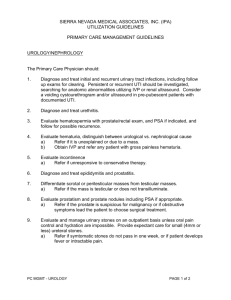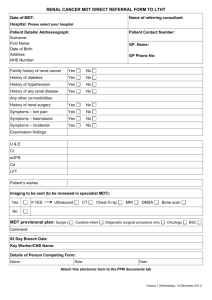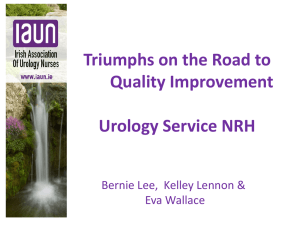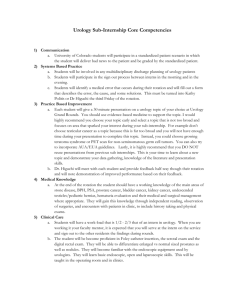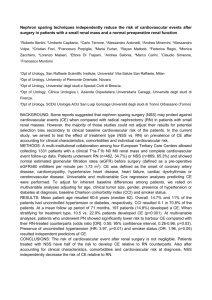Acute loin pain protocol
advertisement
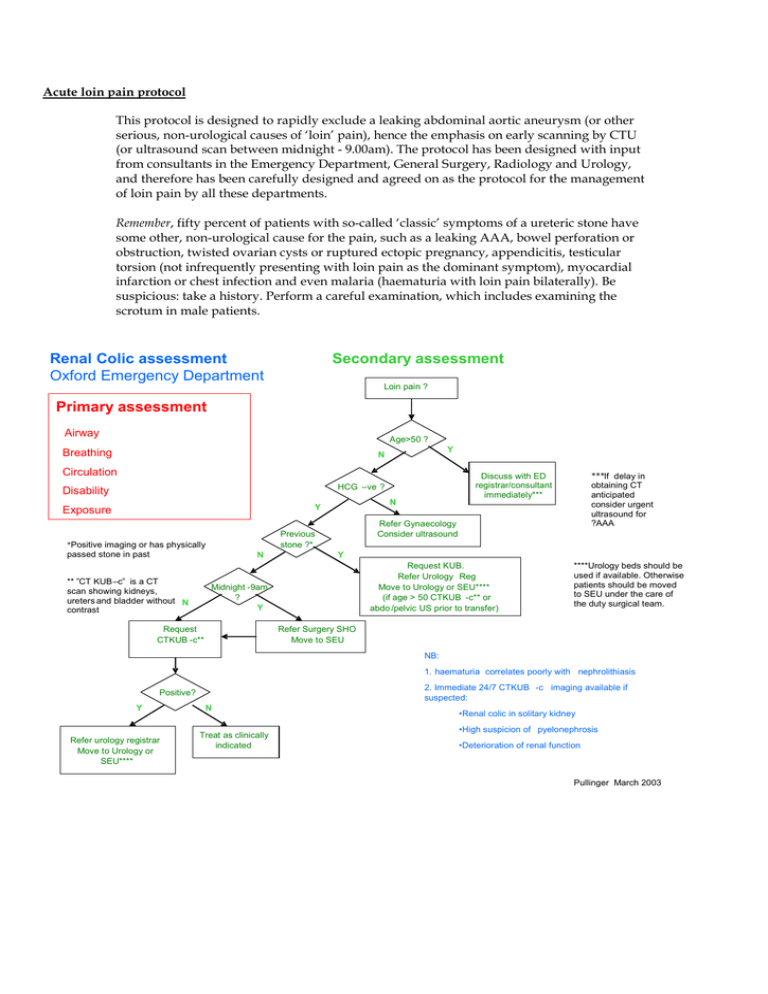
Acute loin pain protocol This protocol is designed to rapidly exclude a leaking abdominal aortic aneurysm (or other serious, non-urological causes of ‘loin’ pain), hence the emphasis on early scanning by CTU (or ultrasound scan between midnight - 9.00am). The protocol has been designed with input from consultants in the Emergency Department, General Surgery, Radiology and Urology, and therefore has been carefully designed and agreed on as the protocol for the management of loin pain by all these departments. Remember, fifty percent of patients with so-called ‘classic’ symptoms of a ureteric stone have some other, non-urological cause for the pain, such as a leaking AAA, bowel perforation or obstruction, twisted ovarian cysts or ruptured ectopic pregnancy, appendicitis, testicular torsion (not infrequently presenting with loin pain as the dominant symptom), myocardial infarction or chest infection and even malaria (haematuria with loin pain bilaterally). Be suspicious: take a history. Perform a careful examination, which includes examining the scrotum in male patients. Renal Colic assessment Oxford Emergency Department Secondary assessment Loin pain ? Primary assessment Airway Age>50 ? Breathing Y N Circulation N Y Exposure passed stone in past N ** ”CT KUB –c” is a CT scan showing kidneys, ureters and bladder without N contrast Refer Gynaecology Consider ultrasound Previous stone ?* *Positive imaging or has physically Y Request KUB. Refer Urology Reg Move to Urology or SEU**** (if age > 50 CTKUB -c** or abdo /pelvic US prior to transfer) Midnight -9am ? Y Request CTKUB -c** ***If delay in obtaining CT anticipated consider urgent ultrasound for ?AAA Discuss with ED registrar/consultant immediately*** HCG – ve ? Disability ****Urology beds should be used if available. Otherwise patients should be moved to SEU under the care of the duty surgical team. Refer Surgery SHO Move to SEU NB: 1. haematuria correlates poorly with nephrolithiasis 2. Immediate 24/7 CTKUB -c imaging available if suspected: Positive? Y Refer urology registrar Move to Urology or SEU**** N Treat as clinically indicated •Renal colic in solitary kidney •High suspicion of pyelonephrosis •Deterioration of renal function Pullinger March 2003 Renal Colic assessment Primary Care Secondary assessment Loin pain ? Primary assessment Airway Age>50 ? Breathing Y N Circulation Refer to Emergency Department HCG – ve ? Disability N Y Exposure OK for outpatient Ix? Y Refer Radiology at Churchill: request CTKUB -c** Refer Gynaecology N Refer Surgery SHO Transfer to SEU NB: ** ”CT KUB –c” is a CT scan showing kidneys, ureters and bladder without contrast 1. haematuria correlates poorly with nephrolithiasis 2. Immediate 24/7 CTKUB -c imaging available if suspected: •Renal colic in solitary kidney •High suspicion of pyelonephrosis •Deterioration of renal function Pullinger March 2003
